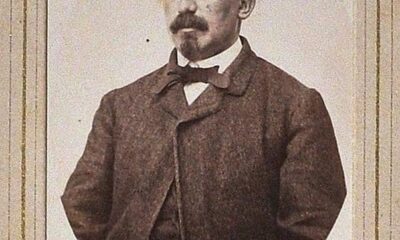Science
3D Study Reveals Shroud of Turin Image Matches Low-Relief Statue

The Shroud of Turin, a relic long associated with the burial of Jesus Christ, has been the subject of intense scrutiny and debate. A recent study conducted by researchers at the University of Padua in Italy has revealed that the image on the shroud closely resembles a low-relief statue rather than a human body. This finding adds a new layer to the ongoing discussions regarding the shroud’s origins and authenticity.
For centuries, the Shroud of Turin has captivated the attention of scientists, historians, and religious scholars. It is believed to be a piece of linen that may have wrapped the body of Jesus Christ following his crucifixion, a claim that has been both supported and contested. The two leading theories regarding its creation suggest it was either an artistic work from the medieval period or a genuine burial cloth from over 2000 years ago.
The recent 3D modeling study aimed to analyze the shroud’s image in detail, comparing it with various artistic representations of Jesus Christ. The results showed that the image aligns more closely with a low-relief statue than with the anatomical features of a human body. This finding challenges the notion that the shroud is a direct imprint of Christ’s visage, as previously suggested by some proponents of its authenticity.
Researchers utilized advanced imaging techniques to create a 3D model of the shroud’s image. By comparing it with various sculptures and artistic interpretations, they were able to establish the similarities in detail and texture. The study underscores the complexity of the artifact and its representation in art, raising further questions about its historical significance.
While the study provides a new perspective, it does not definitively resolve the debate surrounding the shroud’s origins. The Shroud of Turin remains a point of contention, with various factions continuing to advocate for differing interpretations of its significance. Some scholars maintain that it holds profound religious importance, while others view it as a medieval creation lacking genuine historical basis.
As the dialogue continues, the Shroud of Turin remains a focal point for both scientific inquiry and theological exploration. The implications of this recent study extend beyond mere analysis; they touch upon larger themes of belief, art, and the quest for historical truth. The findings will likely stimulate further research and discussion as the academic community continues to grapple with the mysteries surrounding this enigmatic artifact.
Overall, the Shroud of Turin will remain a subject of fascination and debate, as new technologies and studies emerge to shed light on its origins and meaning.
-

 World3 days ago
World3 days agoCoronation Street’s Shocking Murder Twist Reveals Family Secrets
-

 Entertainment4 months ago
Entertainment4 months agoKate Garraway Sells £2 Million Home Amid Financial Struggles
-

 Entertainment3 months ago
Entertainment3 months agoAnn Ming Reflects on ITV’s ‘I Fought the Law’ Drama
-

 Health3 months ago
Health3 months agoKatie Price Faces New Health Concerns After Cancer Symptoms Resurface
-

 Entertainment3 weeks ago
Entertainment3 weeks agoCoronation Street Fans React as Todd Faces Heartbreaking Choice
-

 World4 weeks ago
World4 weeks agoBailey Announces Heartbreaking Split from Rebecca After Reunion
-

 Entertainment6 days ago
Entertainment6 days agoTwo Stars Evicted from I’m A Celebrity Just Days Before Finale
-

 World6 days ago
World6 days agoKevin Sinfield Exceeds Fundraising Goal Ahead of Final Marathons
-

 Entertainment3 months ago
Entertainment3 months agoCoronation Street’s Carl Webster Faces Trouble with New Affairs
-

 Entertainment3 months ago
Entertainment3 months agoWhere is Tinder Swindler Simon Leviev? Latest Updates Revealed
-

 Entertainment4 months ago
Entertainment4 months agoMarkiplier Addresses AI Controversy During Livestream Response
-

 Science2 months ago
Science2 months agoBrian Cox Addresses Claims of Alien Probe in 3I/ATLAS Discovery





















